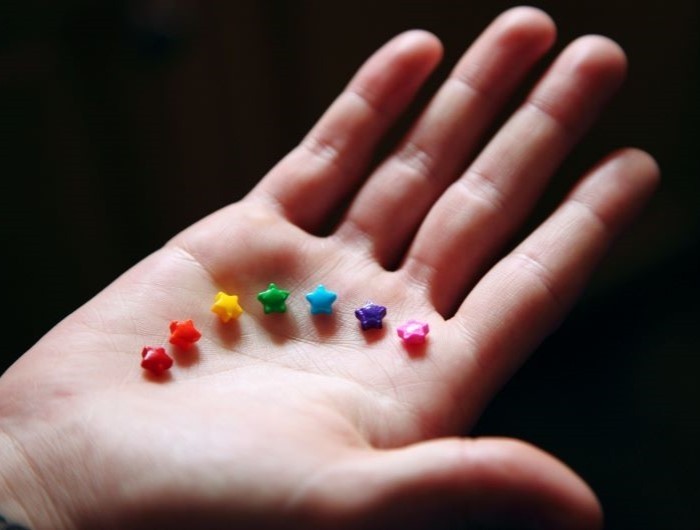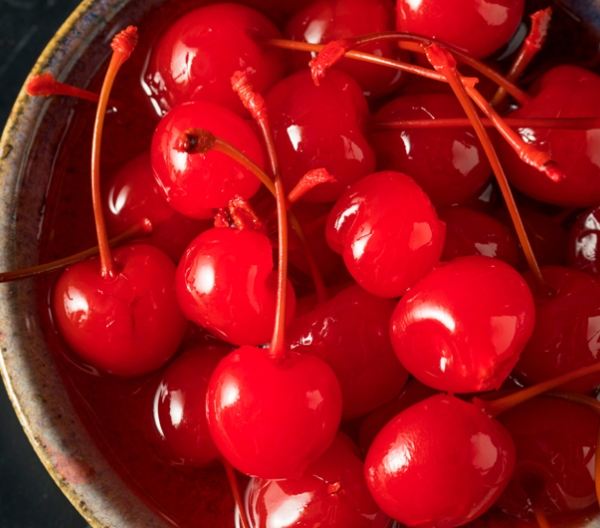Synthetic food dyes: A rainbow of risks

Alexander Grey - unsplash.com
Research shows that the many synthetic dyes used in food can cause harmful health effects, particularly in children. It’s time for the FDA to protect consumers from these unnecessary color additives. Here’s everything you need to know about these food additives and how you can support our work in protecting kids and other consumers.
What are synthetic food dyes?

Many of the most commonly used food colors are synthetic petroleum-derived chemicals that do not occur in nature. These synthetic dyes often substitute for real, nutritious ingredients, such as fruits and vegetables, and are often used to make junk foods more attractive, especially those manufactured for and marketed to children. And, unlike some additives, dyes don’t keep food from spoiling or fend off bacteria that cause food poisoning. They simply exist to help food companies make brightly colored foods look more appealing to eat.
Note: our use of the term “synthetic dyes” includes the following dyes and any approved lakes produced therefrom: Blue 1, Blue 2, Green 3, Red 3, Red 40, Yellow 5, and Yellow 6. There are two other synthetic dyes approved for very limited uses in the U.S. that you are unlikely to encounter: Citrus Red and Orange B.
Which foods contain synthetic food dyes?
More foods contain synthetic dyes than you’d think! According to the USDA Branded Foods Database, more than 36,000 American food products contain Red 40, and more than 8,000 foods sold in the US contain carcinogenic Red 3.
A few examples of common foods that contain harmful dyes include:
- M&M’s
- Jet-Puffed Marshmallows
- Del Monte Fruit Cocktail
- Gatorade
- SunnyD
- Powerade
- Jell-O Instant Pudding, Jell-O Pudding Cups, Jell-O Gelatin Dessert
- Kool-Aid
- Skittles
- Arby’s Brioche Bun, Chocolate Shake, and Honey Mustard Dipping Sauce
- Vlasic Sweet Relish
- Kellogg’s Apple Jacks and Froot Loops
- General Mills Trix
- Post Honeycomb
- Quaker Oats Cap’n Crunch
But the list goes on and on… and, unfortunately, you can’t identify foods that contain dyes simply by looking at colors alone. The only way to reliably identify—and fully avoid—dyed foods is by reading the ingredient lists on package labels. Synthetic dyes, if present, must be listed by name on ingredient lists in almost all foods, although there is some slight flexibility in how they are listed. Blue 1, for example, may appear as FD&C Blue 1, Blue #1, or Blue No. 1. But other color additives like titanium dioxide, which potentially damages DNA when eaten, can just be listed as “artificial color” or “color added.”
Who is eating synthetic dyes
Since synthetic food dyes are commonplace on supermarket shelves and in school foods, they’re likely in the foods you and your family eat regularly.
And since you can’t visually identify which foods have additives, the only way to avoid these harmful food dyes is by checking the ingredients on every food item while grocery shopping and eating at restaurants. But, of course, that’s no easy feat! And if you’re at a restaurant that doesn’t have ingredient information available, you’re simply out of luck, which is why the FDA must start protecting consumers by restricting the use of these harmful additives.
Children are at a higher risk for adverse health reactions than adults

Evidence of the link between synthetic food dyes and neurobehavioral problems in children, including hyperactivity and inattention, has been accumulating for decades. Concern about synthetic food dyes has recently revolved around neurobehavioral impacts on children, in particular exacerbation of attentional problems, such as in children with attention-deficit/hyperactivity disorder (ADHD), and other behavioral outcomes.
In addition to these neurobehavioral effects, the dye Red 3 causes cancer in animals, according to a 1990 determination made by the FDA itself. Federal law prohibits the use of color additives that cause cancer in humans or animals, meaning the FDA is obligated to ban Red 3. Yet more than 30 years have elapsed, and, bafflingly, Red 3 remains FDA-approved. Although all consumers should avoid consuming Red 3, children are generally considered especially susceptible to carcinogens.
How health risks are assessed
The FDA initially approved synthetic food dyes between 1969 and 1987, when few studies were available. Since then, there have been clinical trials (including randomized, double-blind trials) investigating whether synthetic dyes can impact neurobehavioral outcomes in children, and new laboratory studies of neurotoxic effects in animals have become available. In 2021, California’s Office of Environmental Health Hazard Assessment (OEHHA) completed a comprehensive evaluation of all available studies and concluded that synthetic food dyes could “cause or exacerbate neurobehavioral problems in some children.
OEHHA’s peer-reviewed assessment used a state-of-the-art approach combining systematic reviews and evidence integration. To reach its conclusions, it integrated evidence from 27 clinical trials in humans, as well as studies of laboratory animals that shed light on how food dyes might impact the body (including studies on cells and neurotransmitters). These types of clinical trials in humans provide vital scientific evidence, directly showing these dyes have real effects on real children.
Notably, OEHHA also concluded that the FDA’s “safe levels,” or Acceptable Daily Intakes (ADIs), are inadequate to protect children from these harmful effects.
Since 2010, the European Union has required a warning label on foods that contain certain synthetic food dyes to alert consumers to the potential impacts on kids’ neurobehavior. It’s unfortunate for American consumers that no such warnings are required here.
Red 3 and other food dyes to look for

Red 3 is used in thousands of candies, baked goods, beverages, and nearly all maraschino cherries. That’s why, even though CSPI encourages readers to eat more fruit, we caution shoppers to check ingredient lists on fruit cocktails. The FDA has recognized Red 3 as cancer-causing (a carcinogen). The evidence that this dye caused thyroid tumors in rats is “convincing,” according to a 1983 review committee report requested by the FDA. Despite this recognition, Red 3 was banned from use only in cosmetics and topical drugs—not for food use. (We can partially thank the cherry industry for that.)
More than 30 years later, the agency is still dragging its feet. So, in October 2022, along with 23 other organizations and leading scientists, CSPI petitioned the FDA to ban Red 3 from all foods, oral medications, and supplements. We’re still waiting for a response.
Blue 1
Blue 1 is found in thousands of food products, including beverages, candy, and baked goods. One (unpublished) animal test suggested a small cancer risk, and a test-tube study indicated the dye might affect neurons. It also causes occasional allergic reactions. Blue 1 might be safe for people who are not allergic, but it should be better tested.
Blue 2
Blue 2 is used in beverages, candy, and even some pet foods. Animal studies found some—but not conclusive—evidence that Blue 2 causes brain cancer in male rats, but the FDA concluded that there is “reasonable certainty” of no harm.
Citrus red 2
Citrus red 2 is not widely used and, in fact, is found only in the skins of some citrus products. The amounts of this rarely used dye that one might consume, even from eating marmalade, are so small that the risk is not worth worrying about.
Green 3
Green 3, like most other synthetic food dyes, is mostly found in candy and beverages. A 1981 industry-sponsored study suggested Green 3 played a role in forming bladder and testes tumors in male rats. However, the FDA re-analyzed the data using other statistical tests and concluded that the dye was safe. Fortunately, this possibly carcinogenic dye is not widely used.
Orange B
Orange B is approved for use only in sausage casings; high doses of this dye harm the liver and bile duct. However, that is not worrisome because Orange B has not been used for many years.
Red 40
Red 40 is the most widely used food dye, and it can be found in a wide range of food products, including candy, gelatin desserts, pastries, sausage, and even some pet foods. While this is one of the most-tested food dyes, the key mouse tests were flawed and inconclusive. An FDA review committee acknowledged problems but said evidence of harm was not “consistent” or “substantial.” Red 40 can cause allergy-like reactions. Like other dyes, Red 40 is used mainly in junk foods.
Yellow 5
Yellow 5 can be found in many foods, including beverages, gelatin desserts, candy, and baked goods. It’s the second-most widely used coloring and sometimes causes allergy-like hypersensitivity reactions, primarily in aspirin-sensitive persons, and triggers hyperactivity in some children. It may be contaminated with such cancer-causing substances as benzidine and 4-aminobiphenyl (or chemicals that the body converts to those substances).
Yellow 6
Yellow 6 is used in beverages, candy, and baked goods. This dye may cause occasional, but sometimes severe, hypersensitivity reactions. In addition, industry-sponsored animal tests indicated that Yellow 6, the third-most widely used, causes tumors of the adrenal gland and kidney. In addition, small amounts of several carcinogens, such as 4-aminobiphenyl and benzidine (or chemicals that the body converts to those substances), may contaminate Yellow 6. However, the FDA reviewed this data and concluded that Yellow 6 does not pose a significant cancer risk to humans.
How CSPI is working to protect consumers

CSPI has been leading the fight to protect consumers’ health from these dyes for years. In addition to our 2022 federal Red 3 petition, that same year, CSPI also petitioned the California Department of Public Health, asking the Department to require warning labels on dye-containing foods sold in the state. We await a response.
Last year, CSPI and partners like the Environmental Working Group and Consumer Reports successfully urged Gov. Newsom to sign the California Food Safety Act into law, meaning that foods containing Red 3 and three other harmful, unnecessary food additives will no longer be legal to sell or distribute in the state beginning in 2027. Since the California bill’s passage, more states—including New York, Illinois, Pennsylvania, Missouri, and South Dakota—have introduced their own bills to ban Red 3 and other additives. CSPI is currently supporting a bill to prohibit synthetic dyes and titanium dioxide, another harmful color additive, from school foods in California.
As you can see, CSPI is fighting this battle against unsafe colors on many fronts.
Learn more: Where is Red 3 legal? See where your state stands
These are steps in the right direction, but CSPI also believes that states shouldn’t have to control food quality through their own legislation. FDA needs to step up. The FDA has already banned Red 1 and 2, Green 1, Violet 1, and other dyes for causing cancer or organ damage.
How to avoid harmful synthetic food dyes
Unfortunately, avoiding harmful food additives is a burden that falls to the consumer when the agencies that govern our food system fail to act. The best line of defense is the ingredients list of any food product, which you should check for any additives you’ve chosen to avoid.
Using our Chemical Cuisine consumer tool while grocery shopping can also help you identify additives to avoid, as well as what types of foods contain a particular additive, so you know where to look for it.
M.M. Bailey (she/her) is a writer who lives in the DC metro area. Her writing has been featured in Fall for the Book’s October 2021 podcast series and can be found in Fractured Lit, This is What America Looks Like, Furious Gravity, and Grace In Love, among others. Her special interests have focused on cultural representations of gender and race, as well as the role of visual narratives in social justice and reform.

Stirring the Pot
Join the fight for safer, healthier food
Sign up to receive action alerts and opportunities to support our work in Stirring the Pot, our monthly newsletter roundup.


